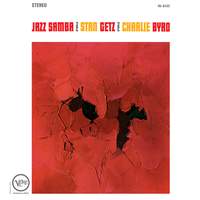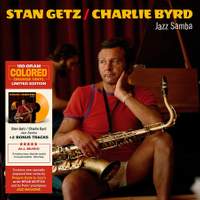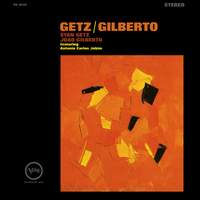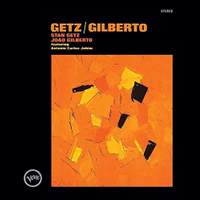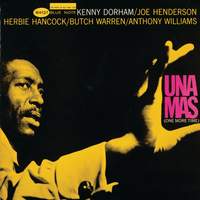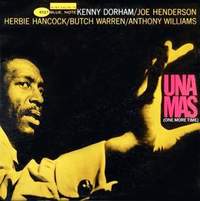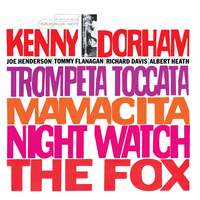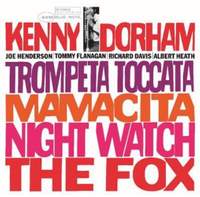Jazz Genre Guides,
Latin Jazz - Part One

One of the strongest, dependable and most influential subgenres to come out of American music has to be Latin Jazz. However, that’s not to say this style originated wholly within the States alone. In fact, its two key influences derived chiefly from an island immediately to the south of Florida as well as the largest country in South America. Join us as we take a brief historical look at the initial journey jazz took from America to Cuba and Brazil then back again.
Elements of Latin musicality had cropped up in jazz since the early stages of the genre’s inception. The New Orleans pianist and bandleader Jelly Roll Morton was a chief exponent of what he coined ‘the Spanish tinge’, a name given by the Creole musician to the sound of Cuban rhythms which h incorporated into his own hybrid style of ragtime. But it was the arrival of Cuban musicians on the East Coast of America over the coming decades that properly fuelled the development and popularisation of this diverse approach to music-making. Through their mingling with notable bandleaders such as Machito and Mario Bauza, jazz legends like Charlie Parker and Dizzy Gillespie were able to cut their teeth whilst building innovations within the confines of a whole new style that would come to be known as Afro-Cuban jazz, or, ‘Cubop’.

The cultural and social blend of different musical flavours within the New York scene led to the expansion of bandleaders’ visions of the instrumentations for which they were writing. What was distinctive about this novel flavour was its penchant for clave rhythms (subdivisions of superimposed 2’s and 3’s) laid down by bass and percussion. Melodic and harmonic styles shifted, similarly, favouring the juxtaposition of solidly fixed rhythmic accompaniment underneath a loud and unrestrained brass frontline. The communion of Gillespie’s electrifying bebop licks along with the sturdy percussive drive of Chano Pozo offered the trumpeter his first big hit, ‘Manteca’, in 1947 – an impulse that would be solidified in the all-Latin rhythm section of Afro (1954).
This hip wave of multicultural fusion swiftly made its way as a promising new sound in the world of jazz over the course of the following years, thanks to the inclusion on the mainstream bandstand of Cuban percussionists including Sabu Martinez and Mongo Santamaria. In a similar fashion, the melting pot of NYC’s young Black and Latinx demographic made common ground through a blend of musical styles called ‘boogaloo’, a contrived mixture of R&B, soul and mambo, which quickly spread across the country and its airwaves.
The next corner turned was that of the Brazilian-influence about to unfurl on the popular jazz scene. Charlie Byrd, guitarist and part-time cultural ambassador, had picked up several records by composers João Gilberto and Antônio Carlos Jobim on a recent diplomatic mission to South America in 1961, before bringing them home to play to saxophonist Stan Getz. Coming together to pay authentic homage to the style that so captivated them on Jazz Samba (1962), the pair unknowingly launched a new genre into the mainstream of Western music, catapulting the sonic essence of bossa nova before an audience of millions in advance of the term having even arrived on American shores. This record encapsulated the gentle sonorities and sultry rhythms of beachbound Brazilian samba and was only to be surpassed in recognition by the acclaimed Getz/Gilberto, released just two years later. Perhaps the musicians’ finest hour, it contains the revered vocal performance from Astrud Gilberto that defined the era on ‘The Girl From Ipanema’. With records like Grant Green’s The Latin Bit (1962) in addition to Kenny Dorham’s Una Mas (1963) and Trompeta Toccata (1965), the up-to-date and ever-changing compositional and performative styles of the finest cats around proved that Latin shapes and grooves were now firmly a part of the jazz vocabulary.
Stay tuned for Part Two, coming next week...

With cuts ranging from 1948 to '52, hear what happens when you drop the world's greatest bebop saxophonist into the confines of Machito's rambunctious crew of congas, bongos and timbales. It's classic Bird at the height of his powers in a refreshingly different setting than usual!
Available Formats: MP3, FLAC
An early contender for Diz's magnum opus that features the glorious opening 'Manteca Theme', a hybrid of Chano Pozo's fiery rhythmic lines, Gil Fuller's orchestration and Gillespie's Ellingtonian-bridge that swings as hard as anything, all the while remaining truly greater than the sum of its parts.
Available Formats: MP3, FLAC
Getz and Byrd's first collaborative effort featuring the hit rendition of 'Desafinado' that would go on to inspire a generation of jazz musicians seeking to broaden their palettes in search of the new sound, anticipating the Brazilian craze that would commandeer both the commercial and artistic side of jazz for years to come.
Available Formats: MP3, FLAC, Hi-Res FLAC, Hi-Res+ FLAC
Collector's Limited Edition LP
Available Format: Vinyl Record
If Jazz Samba was the starting pistol that alerted mainstream American audiences to the existence of Brazilian music then Getz/Gilberto, the former album's more refined cousin, was a victory lap. Although his name comes last on the sleeve, this recording belongs to Gilberto (that is, singer-songwriter João and his then-wife, Astrud) whilst Getz exercises perfect restraint through his thoughtful contributions.
Available Formats: CD, MP3, FLAC, Hi-Res FLAC, Hi-Res+ FLAC
Dorham and crew are absolutely burning on this, the first record to feature the impressive up-front duo that includes Kenny's faithful companion Joe Henderson on tenor. From the interminable title track to the moody cityscape of 'Sao Paulo', this is one of the most interestingly shaped cuts from the golden age of Blue Note.
Available Formats: MP3, FLAC, Hi-Res FLAC, Hi-Res+ FLAC
A development on the spice-infused sounds he had previously carved out, the trumpeter returns with more edgy and complex flamenco-inspired arrangements that still retain that core element of swing. Dark and brooding but always enlightening, here are jazz artists not working in direct opposition to the popularisation of Latin jazz but in conjunction with its ever-growing appeal, all the while gaining confidence in their own unique hard-bop sensibilities.
Available Formats: MP3, FLAC, Hi-Res FLAC, Hi-Res+ FLAC




